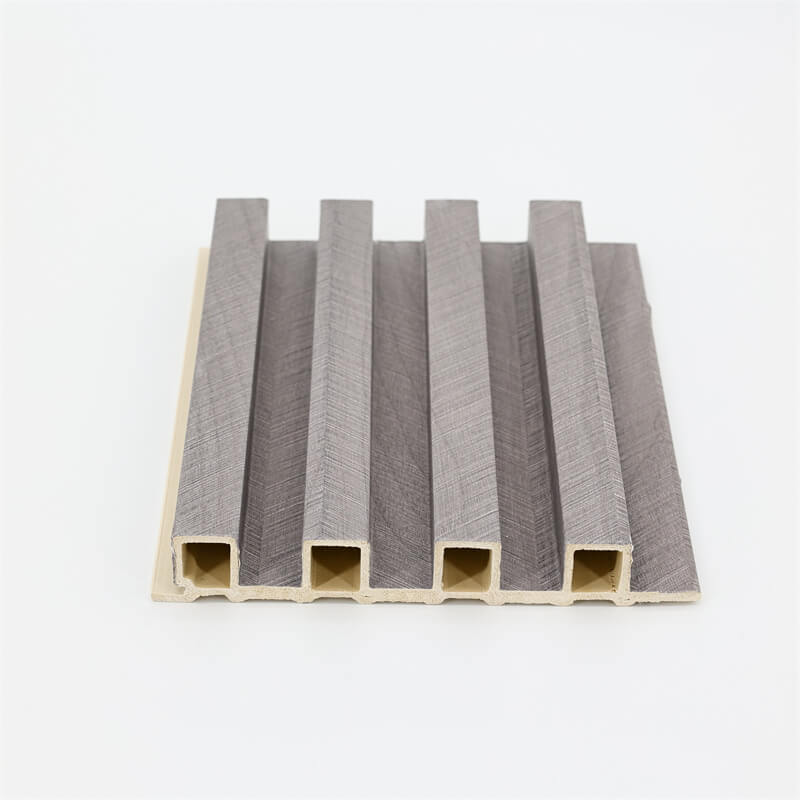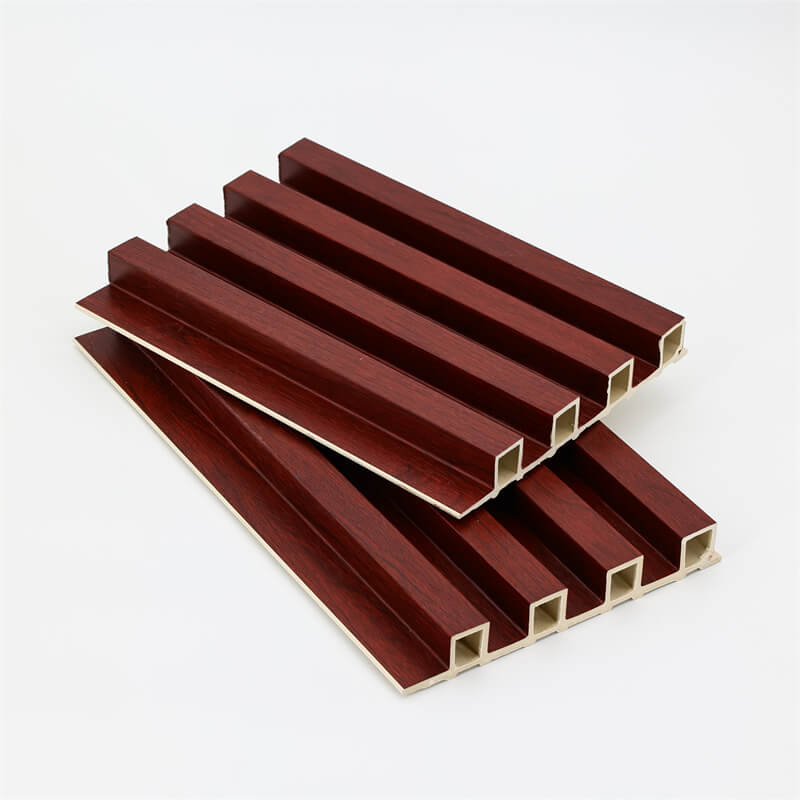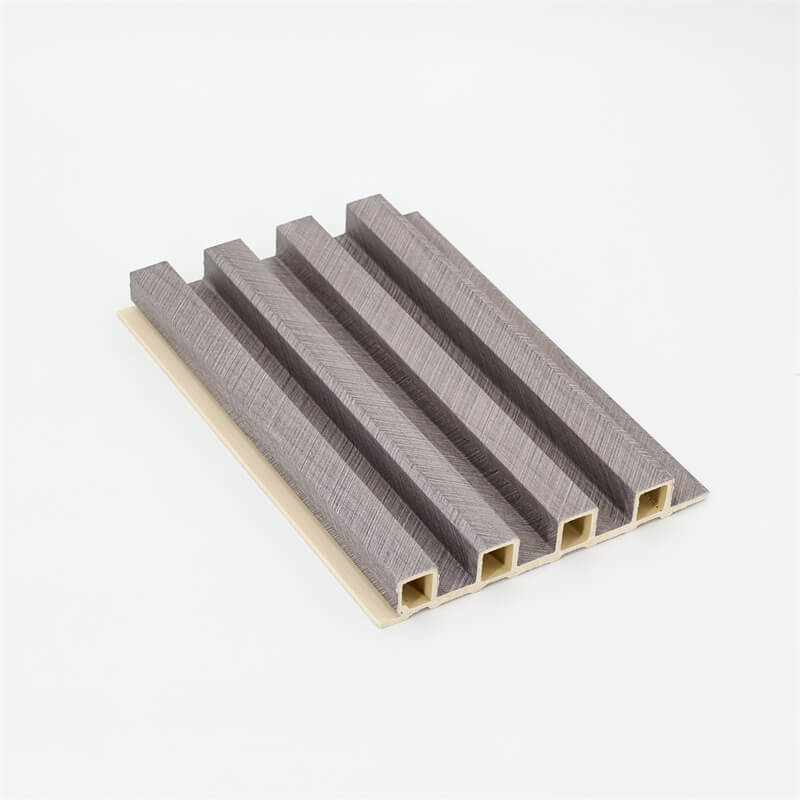
Commercial spaces require careful attention to both aesthetics and functionality to create an inviting and productive environment for employees and visitors alike.
WPC wood slat panels offer a versatile and sustainable solution for transforming commercial spaces into visually appealing and functional areas.
These panels, composed of a blend of wood fibers and recycled plastic, strike a perfect balance between aesthetics and durability.
This article explores the advantages and applications of WPC wood slat panels in commercial spaces, as well as considerations when selecting manufacturers and suppliers.
I. Understanding WPC Wood Slat Panels
WPC, or Wood Plastic Composite, is a cutting-edge material that combines the natural beauty of wood with the durability and weather resistance of plastic.
WPC wood slat panels are created by blending wood fibers or flour with plastic, typically high-density polyethylene (HDPE), and other additives.
This composition results in panels that mimic the appearance of wood while offering enhanced strength, longevity, and sustainability.
Benefits of WPC Wood Slat Panels for Commercial Spaces
WPC wood slat panels offer numerous advantages over traditional building materials, making them an ideal choice for transforming commercial spaces:
These panels add warmth, texture, and natural aesthetics to commercial interiors and exteriors.
They are available in a variety of colors, finishes, and profiles, allowing for customization and design flexibility to suit different architectural styles.
WPC panels are highly resistant to moisture, rot, and pests, ensuring their longevity even in high-traffic commercial environments.
They do not warp, crack, or fade easily, reducing maintenance costs and the need for frequent replacements.
By utilizing WPC wood slat panels, commercial spaces contribute to sustainable practices.
These panels are made from a blend of recycled materials, reducing the demand for virgin wood and diverting plastic waste from landfills.
WPC panels can be used in various applications, including wall cladding, ceilings, partitions, and decorative elements.
Their versatility allows designers and architects to create unique and engaging commercial spaces.
Applications of WPC Wood Slat Panels in Commercial Spaces
WPC wood slat panels find diverse applications in commercial settings, enhancing aesthetics and functionality:
WPC panels can be used as wall cladding to create visually striking and durable facades.
They provide insulation, protect the building envelope, and contribute to energy efficiency.
WPC wood slat panels are excellent for interior applications, such as ceilings, feature walls, and decorative elements.
They add depth, texture, and character to commercial WPC panels can be utilized to create partitions and dividers within commercial spaces.
They offer privacy, sound insulation, and a visually appealing alternative to traditional dividers.
WPC panels are suitable for outdoor applications in commercial settings, such as decking, seating areas, and patio enclosures.
They provide a durable and sustainable solution that withstands weather conditions and heavy use.

II. Choosing Manufacturers and Suppliers
Selecting reputable manufacturers and suppliers is crucial when considering WPC wood slat panels for commercial spaces.
Here are key factors to consider:
Product Quality: Choose manufacturers that produce high-quality WPC panels. Look for certifications or accreditations that validate their adherence to industry standards.
Assess the quality of materials used and the manufacturing process employed to ensure durable and reliable panels.
Range of Options: Opt for manufacturers or suppliers that offer a wide range of panel sizes, profiles, finishes, and customization options.
This ensures that commercial spaces can be tailored to meet specific design requirements and brand aesthetics.
Pricing and Value: While price is an important consideration, it should not be the sole determinant.
Evaluate the overall value offered by the manufacturer, considering factors such as product quality, warranty, customer service, and post-purchase support.
Manufacturing Processes and Facilities: Gain insights into the manufacturer’s factory and production process.
Ensure that they have modern facilities and follow efficient manufacturing practices to ensure consistent quality control.
III. Cost Considerations and Budgeting
The cost of WPC wood slat panels for commercial spaces can vary depending on factors such as panel size, design complexity, and quantity required.
It is important to establish a budget and consider the long-term benefits and returns on investment.
Obtaining Quotes: Request detailed quotes from multiple suppliers or manufacturers.
Compare the cost per panel, additional charges, and shipping fees to make an informed decision based on the allocated budget.
Long-term Cost Analysis: While WPC panels may have a higher upfront cost compared to some traditional materials, their durability, low maintenance requirements, and sustainability benefits can result in long-term cost savings.
Consider the overall lifecycle cost when evaluating different options.

IV. Maintenance and Care of WPC Wood Slat Panels
Proper maintenance ensures the longevity and aesthetics of WPC wood slat panels in commercial spaces.
While these panels require minimal upkeep, the following steps can help maintain their appearance:
Regular Cleaning: Use mild soap, water, and a soft brush to remove dirt, dust, or stains from the panels.
Avoid using abrasive cleaners or tools that may damage the surface.
Inspection and Repair: Periodically inspect the panels for any signs of wear, damage, or loose fasteners.
Address any issues promptly to maintain the integrity and visual appeal of the commercial space.
Sustainability Practices: Dispose of any waste or old panels responsibly, following recycling or waste management guidelines.
Consider repurposing or recycling WPC panels at the end of their lifecycle to minimize environmental impact.
WPC wood slat panels offer a compelling solution for transforming commercial spaces into visually appealing and functional environments.
Their aesthetics, durability, sustainability, and versatility make them a preferred choice among designers, architects, and building owners.
When selecting manufacturers and suppliers, consider factors such as product quality, range of options, pricing, and manufacturing practices.
By incorporating WPC wood slat panels into commercial spaces, businesses can create inviting and stylish environments that promote productivity, enhance the brand image, and contribute to sustainable practices.
